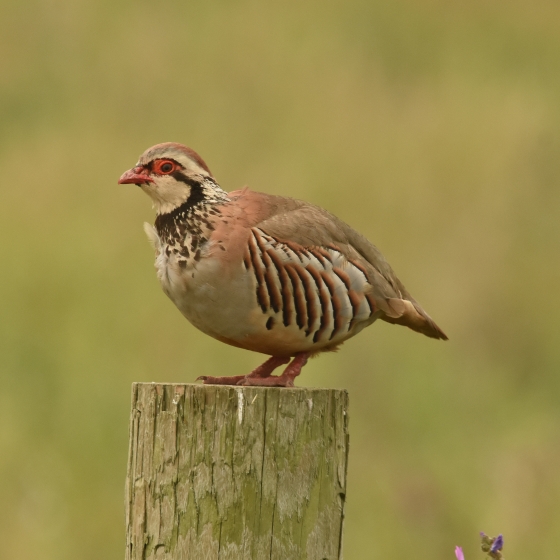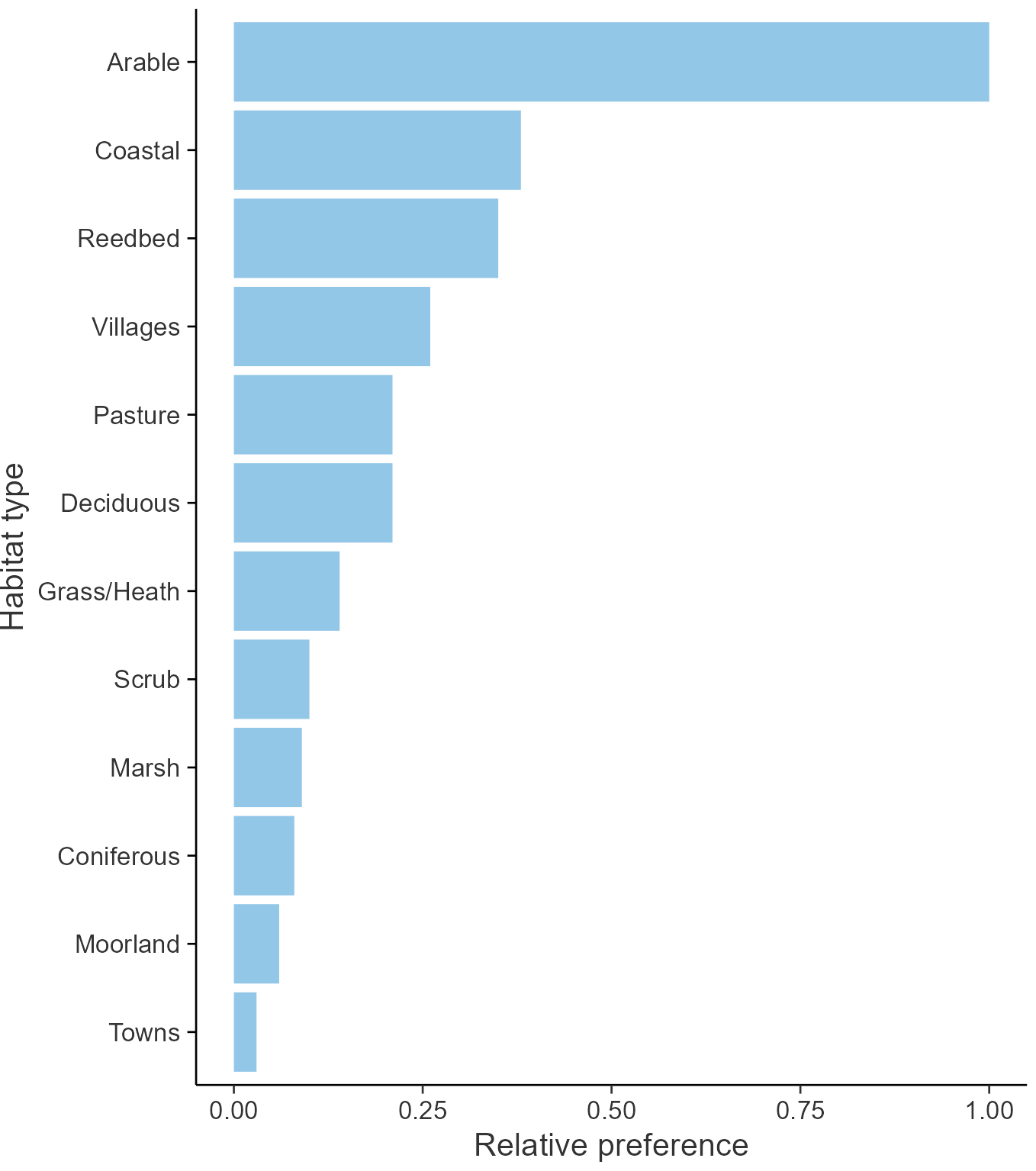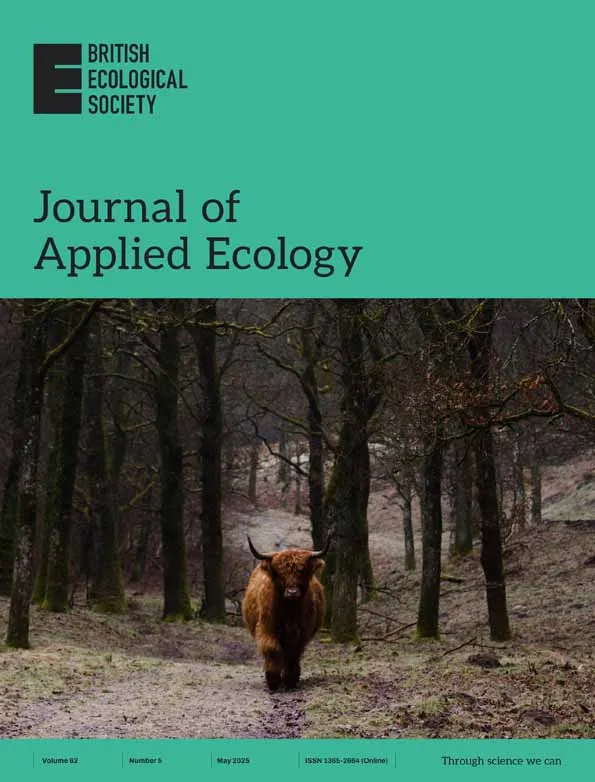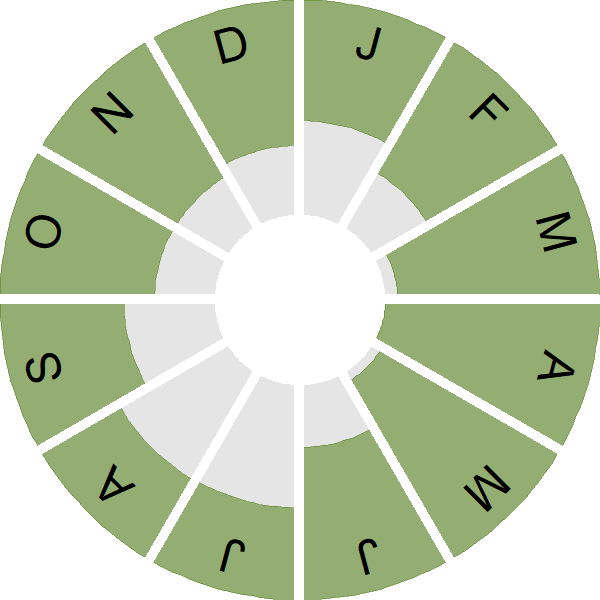Red-legged Partridge

Introduction
The Red-legged Partridge is a rather small dumpy bird with bright red legs, white cheeks and an ostentatious black spotted necklace.
The species first became established as a breeding bird in the late 1700s, when large numbers were hand-reared on the Duke of Hertford's Suffolk estate. Introduced for sporting purposes, the Red-legged Partridge is now a widespread bird of open country and can be found almost anywhere from Land's End to John O Groats.
It is estimated that around 78,000 territories are occupied during the summer months, although numbers fluctuate widely because of the annual release of more birds into the population. Breeding Bird Survey data reveal a general decline in abundance since the late 1980s.
- Our Trends Explorer gives you the latest insight into how this species' population is changing.

Key Stats
Identification
ID Videos
This section features BTO training videos headlining this species, or featuring it as a potential confusion species.
Partridges
Songs and Calls
Song:
Call:
Status and Trends
Conservation Status
Population Change
Since Red-legged Partridge is a non-native species released in the UK for the purpose of being shot by hunters, its long-term CBC/BBS population decrease in England raises no conservation concern. Significant increases shown in the UK and England during the first 10 years of BBS have been reversed during the second decade of BBS. Game-bag data show that the numbers released per unit area onto shooting estates, and the numbers shot, have both increased substantially (PACEC 2006, Aebischer 2019). There has been widespread moderate decline across Europe since 1998 (PECBMS: PECBMS 2020a>).
Distribution
Red-legged Partridges are distributed widely across England, the eastern half and southwest of Scotland and the Isle of Man. In Wales they are found mainly in Anglesey and Pembrokeshire with scattered records elsewhere in the northeast and southeast. Records in Ireland are relatively scarce and come from agricultural areas.
Occupied 10-km squares in UK
2007/08–10/11
or view it on Bird Atlas Mapstore.
2008–11
or view it on Bird Atlas Mapstore.
European Distribution Map
Distribution Change
The Red-legged Partridge change maps for winter and the breeding season show an increase in the number of occupied 10-km squares in north, northwest and southwest England, Scotland, Wales and Ireland. These gains are likely to be mainly due to local releases, with some natural range expansion.
Change in occupied 10-km squares in the UK
from 1981–84 to 2007–11
or view it on Bird Atlas Mapstore.
from 1968–72 to 2008–11
or view it on Bird Atlas Mapstore.
Seasonality
Red-legged Partridges are recorded throughout the year.
Weekly pattern of occurrence
The graph shows when the species is present in the UK, with taller bars indicating a higher likelihood of encountering the species in appropriate regions and habitats.

Habitats
Breeding season habitats
Relative frequency by habitat
The graph shows the habitats occupied in the breeding season, with the most utilised habitats shown at the top. Bars of similar size indicate the species is equally likely to be recorded in those habitats.

Movement
Britain & Ireland movement
Foreign locations of birds ringed or recovered in Britain & Ireland
Dots show the foreign destinations of birds ringed in Britain & Ireland, and the origins of birds ringed overseas that were subsequently recaptured, resighted or found dead in Britain & Ireland. Dot colours indicate the time of year that the species was present at the location.
- Winter (Nov-Feb)
- Spring (Mar-Apr)
- Summer (May-Jul)
- Autumn (Aug-Oct)

Biology
Productivity and Nesting
Nesting timing
Egg measurements
Clutch Size
Survival and Longevity
Survival is shown as the proportion of birds surviving from one year to the next and is derived from bird ringing data. It can also be used to estimate how long birds typically live.
View number ringed each year in the Online Ringing Report.
Lifespan
Biometrics
Wing length and body weights are from live birds (source).
Ring Size
Classification, names and codes
Classification and Codes
- Order: Galliformes
- Family: Phasianidae
- Scientific name: Alectoris rufa
- Authority: Linnaeus, 1758
- BTO 2-letter code: RL
- BTO 5-letter code: RELPA
- Euring code number: 3580
Alternate species names
- Catalan: perdiu roja
- Czech: orebice rudá
- Danish: Rødhøne
- Dutch: Rode Patrijs
- Estonian: lääne-kivikana
- Finnish: punapyy
- French: Perdrix rouge
- Gaelic: Cearc-thomain-dhearg-chasach
- German: Rothuhn
- Hungarian: vörös fogoly
- Icelandic: Sandhæna
- Irish: Patraisc Chosdearg
- Italian: Pernice rossa
- Latvian: kalnu irbe
- Lithuanian: raudonkojis keklikas
- Norwegian: Rødhøne
- Polish: góropatwa czerwona
- Portuguese: perdiz-comum
- Slovak: kuropta cervená
- Slovenian: španska kotorna
- Spanish: Perdiz roja
- Swedish: rödhöna
- Welsh: Petrisen Goesgoch
- English folkname(s): French Partridge
Research
Causes of Change and Solutions
Causes of change
The population size of this species is principally determined by releases of reared birds for shooting. Little is known about the impacts of changes in demographic parameters among wild-breeding birds.
Further information on causes of change
It must be noted that numbers and distribution of this introduced gamebird are largely determined by releases of reared birds for shooting (Pringle et al. 2019). Game-bag data show that the numbers released per unit area onto shooting estates, and the numbers shot, have increased more than eightfold between 1980 and 2004: around 6.5 million birds were released annually in the UK in the early 2000s (PACEC 2006). This has since increased further to around 9.5 million birds in 2012 and around 10 million in 2016 (Aebischer 2019). Around 12.6 million Red-legged Partridges were recorded as being held in captivity before release in 2010, although this total may include some birds that died in captivity and hence were not released (Pringle et al. 2019).
Modelling suggests that climate change may also have had a positive impact on the long-term trend for this species, possibly caused by either improved breeding success or increased survival of released birds (Pearce-Higgins & Crick 2019).
Information about conservation actions
As a non-native introduced breeding species, Red-legged Partridge does not have a conservation status in the UK.
Large numbers of Red-legged Partridges are released annually in the UK, and concerns have been raised that this may impact negatively on the conservation status of some native species. There is now evidence that high densities of released Pheasant and Red-legged Partridges may be having a positive effect on some avian predator populations, by providing additional winter food resources and hence reducing winter mortality of predators; this may in turn impact negatively on other UK native birds during subsequent breeding seasons through increased levels of nest predation (Pringle et al. 2019). There is also evidence that shooting operations based on large-scale releases of Red-legged Partridges can lead to local extinction of the red-listed native Grey Partridge (Watson et al. 2007).
Publications (1)
Associations between gamebird releases and general predators
Author: Pringle, H., Wilson, M., Calladine, J. & Siriwardena, G.M.
Published: 2019
BTO research reveals that the release of Pheasants and Red-legged Partridges for commercial shoots may be boosting numbers of the avian predators and scavengers. Every year, 41-50 million non-native gamebirds (Pheasant and Red-legged Partridge) are released in the UK. Fewer than half these birds are shot, meaning there is potentially a large food resource available to predators and scavengers, sustaining their populations above the levels they would otherwise reach. If it occurs, this inflation of predator numbers might alter predator-prey dynamics, increasing predation pressure on some vulnerable species, including declining breeding waders like Curlew. This study used data from the Breeding Bird Survey and Bird Atlas 2007-11 to identify associations between the occurrence patterns of gamebirds and the abundance and population growth rates of several generalist predators, including Buzzard, Jay, Raven, Magpie and crows (Carrion and Hooded combined). While many other factors influence predator abundance, such as fine-scale habitat variation, availability of other food sources, and game management activities, the results suggest that large-scale variation in avian predator populations is predominantly positively affected by gamebird releases. The potential implications of this finding need to be thoroughly tested. Such tests could include regulation of releases on a trial basis, to determine effects on ground nesting birds, for example. The compulsory recording of releases and the number of predators controlled would also be valuable for a better understanding of the impacts, positive or negative, of gamebird releases on the wider environment. Read a blog post by publication author Henrietta Pringle discussing the work behind this paper.
02.07.19
Papers

More Evidence
More evidence from Conservation Evidence.com
Partners
Citing BirdFacts
If you wish to cite particular content in this page (e.g. a specific value) it is best to use the original sources as linked in the page. For a more general citation of the whole page please use: BTO (20XX) BirdFacts Species: profiles of birds occurring in the United Kingdom. BTO, Thetford (www.bto.org/birdfacts, accessed on xx/xx/xxxx).

